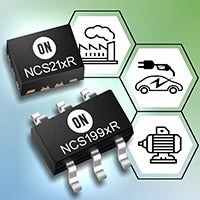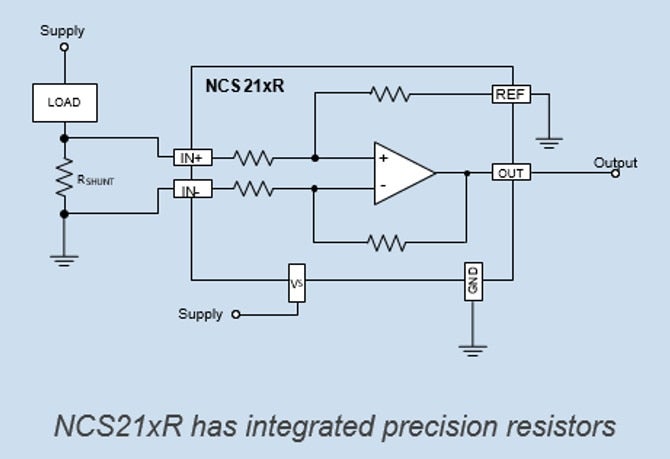Current Sensing Solutions
八月 22, 2018
Share:

Today’s electronics incorporate a lot more functionality compared to ten years ago. Engineers are pushed to design sophisticated systems and often times get “creative” to meet stringent power budgets in order to remain energy efficient. Predictive system maintenance and protection require fast acting system responses. One of the pivotal functions that allow the above, is monitoring the current consumption and voltage drops across the system.
Amongst all the current sensing methods, by far, the most popular method is monitoring the current across a shunt using an amplifier. Current sensing can be implemented using either Current Sense Amplifiers (CSA) or Operational Amplifiers (Op Amps) with external gain setting resistors (Fig. 1). The choice of either, depends on the performance requirements and the target cost for the bill of materials (BOM).


Fig. 1(a) Op Amps with external gain-setting resistors Fig. 1(b) Current Sense
From a performance standpoint, the mismatch between the gain-setting resistors impacts the accuracy of the current measurement and consequently the shunt size. Other design considerations include device specifications (Input Offset Voltage, Common Mode Rejection, Gain Error), shunt size, shunt location and PCB layout. We will dive into details on each of these in the subsequent blogs. For now, let’s look at it from a high level.
We took four amplifiers (LM358, NCS20081, NCS333 and NCS214R) to compare and contrast the performance benefits across the spectrum from general purpose to the precision amplifier (left to right in Fig. 2 and 3).
The NCV214R integrates the gain-setting resistors for better matching and common mode performance. The others require external resistor network. Let us assume that well-match resistor network is used for the LM358, NCS20081 an NCS333 for this performance comparison. The NCS214R offers a highest accuracy (Fig. 2) and a highly efficient solution (Fig. 3) when compared to the rest.

Fig 2: For a fixed shunt drop (e.g. 50 mV), there are a couple orders of magnitude difference in offset error

Fig. 3: If designing for maximum system efficiency, for a fixed offset error, lower shunt drops reduce the power dissipation
From a BOM cost standpoint, a well-matched resistor network would be expensive (~$1) enough to nullify the cost savings achieved by using a General Purpose Op Amp (~$0.10). While the perception is that the Current Sense Amplifier is expensive, when comparing the complete solution cost, it is likely that they are cheaper than the Op Amp solution.
But wait! There’s more… another advantage: solution size. The Op Amp with its external resistor network, will not be as small as the NCS21xR in uQFN or SC70.
Visit our Current Sense Amplifier product page for more information or ask us your current sensing questions.
| Product Webpage | NCS210R | NCS211R | NCS213R | NCS214R |
| Gain (V/V) | 200 | 500 | 50 | 100 |
| Gain Error (%) | 1 | 1 | 1 | 1 |
| Offset Voltage (µV) | 35 | 35 | 100 | 60 |